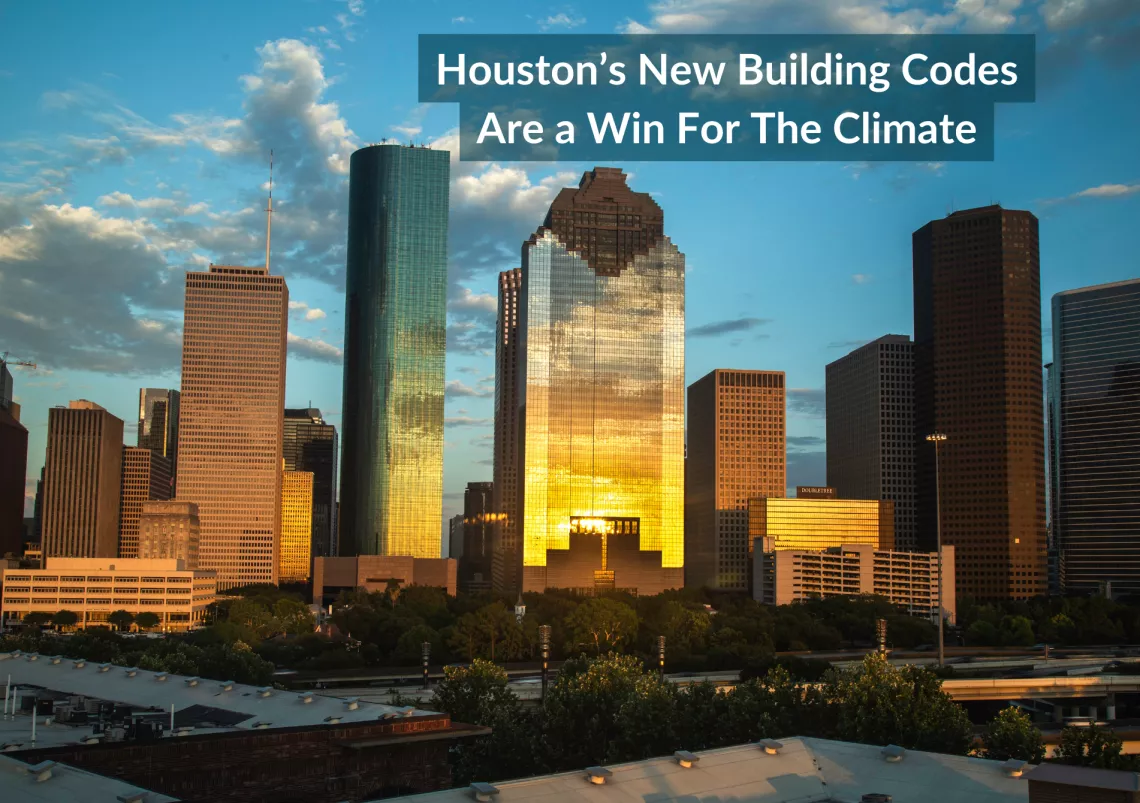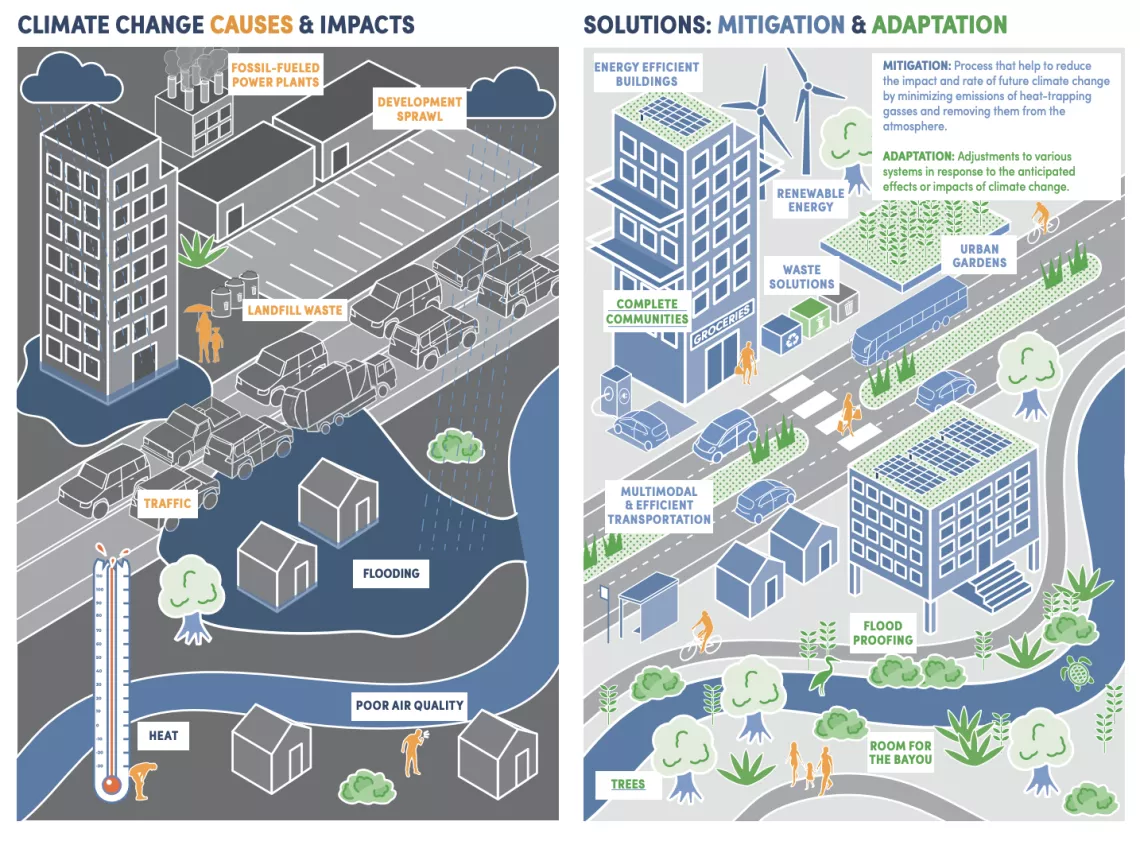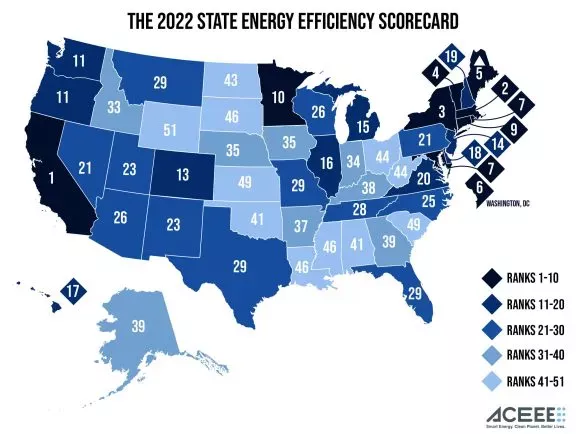
Photo by Trace Hudson, via Canva
By Cyrus Reed
At the end of October, the City of Houston adopted new building construction codes that will make homes and businesses across the city more water and energy efficient – and in the process, more climate resilient. In 2020, city leaders released a Resilience Plan that specifically listed adopting these new codes as a tool to building a more forward-facing city.
While building codes might not be the first thing we think of when we talk about climate solutions, the move, made by the city’s outgoing mayor and current city council, is an important step. Houston’s new codes go into effect in 2024. This summer, we’ve already seen record heat and surging energy and water demand; the threat of floods and hurricanes still looms through November.
Buildings –whether single-family homes, multi-family housing, commercial or industrial–last for decades. They account for nearly 30 percent of US climate emissions. Commercial buildings draw 17 percent of all municipal water in the country for heating, cooling, plumbing and landscaping. Ensuring that people can live and work in buildings that are more energy-efficient, water-efficient and resilient to climate extremes is a key priority for our team at Texas Living Waters.
New buildings in the country’s fourth largest city will soon be 5 to 10 percent more energy efficient than before, and we’ll also see water savings through more efficient products and technology. What’s more, the cities of San Antonio, Austin, and Dallas have already adopted the 2021 IECC, meaning that important efficiency goals that benefit our climate goals are already underway. More cities and towns could follow the example set by these local governments.

Source: City of Houston Resilience Plan
A Brief History of Codes in Texas
Building codes are essentially minimum standards. They can regulate everything from fire safety to electrical systems, plumbing and even swimming pools. Codes are typically designed by national organizations, including the International Code Council, and it is up to states and localities whether to adopt or modify them. Standards are updated frequently to encourage the use of safer and more efficient technologies and materials.
Some developers will choose to go beyond minimum code requirements to meet green building standards. For example, LEED (Leadership in Energy and Environmental Design) is the most widely used green building rating system in the world. LEED provides a framework for healthy, efficient, and cost-saving green buildings.Other examples include the International Green Construction Codes. Some governments have created “stretch” codes that give certain certifications, incentives or other recognitions for homes, apartments or commercial buildings that go beyond minimum standards.
The state of Texas, however, didn’t have any standardized building codes until 2001, when it adopted both an International Residential Code (IRC) and National Electric Code. That means buildings constructed before 2001 may not have been built following minimum safety and efficiency standards that were being adopted in most other states at the time.
Today, Texas still lags behind: Overall, state law only requires that new construction meets the standards set in codes developed in 2012. In 2023, the Texas legislature passed Senate Bill 2453, sponsored by Jose Menendez, which would have created a process for the State Energy Conservation Office to adopt 2021 energy codes which are roughly 10% more energy efficient than the state’s current 2015 codes, which were adopted by the State Energy Conservation Office. Unfortunately, Governor Abbott ultimately vetoed the legislation, citing the Legislature’s failure to pass property tax cuts that were not related to the bill itself.

Source: The American Council for an Energy-Efficient Economy (ACEEE)
How Good are Houston’s New Codes?
Houston will now use 2021 building codes, which are the most recently published versions. Most importantly, Houston also adopted a suite of requirements developed by the American Society of Civil Engineers to make buildings more resistant to high winds, floods, and other extreme weather conditions. That makes Houston the first city in Texas to adopt these newer, stricter ASCE standards.
The upshot is that newly constructed homes, offices and facilities will use less energy and water. This is good news for residents, who may see a dip in their utility bills– and it’s a win for the climate as we reduce the waste of our natural resources. As an example, toilets and water faucets are now required to be much more efficient: the new codes mandate that a toilet uses 1.2 gallons of water per flush as opposed to 1.6 gallons per flush. That saves water– and as we’ve seen during extreme drought conditions like this year, every drop saved counts.
The code requirements could also spur job creation as builders will need to install new windows, more efficient electrical systems, and better insulation, among other things. The new codes do not require existing buildings to be retrofitted. But if there are any major alterations, repairs, additions or changes– such as in the use of a building– that would lead to at least some aspects of the new code applying to existing buildings.
All of these wins are occurring despite the state’s lack of action– since Texas is a “home rule” state, cities have the right to update local construction codes as they see fit. Cities can move the needle on efficiency even when the state fails to take action.
But it wasn’t an easy or straightforward path to get the City to adopt new codes. Rather, it was the culmination of over a year of public meetings, presentations, proposals and trainings– and four different technical committees. A community oversight committee also reviewed all of the proposed changes, ensuring a final layer of oversight to make sure the changes were in the interest of regular Houstonians.
Sierra Club participated in both a technical working group on the energy code as well as on the community oversight committee. Sierra Club was able to make specific recommendations or amendments to the proposed code. While not all of our proposed amendments were adopted through the consensus-based process (for example, electric vehicle provisions), the wins we achieved will help Houstonians build resilience in the face of extreme weather.
What’s next for the Living Waters Project on codes?
While Houston’s adoption is a major win, there’s room for improvement in other parts of the state.
- We continue to advise on One Water policies in Houston, which would encourage the city to take an integrated approach to water management that prioritizes system-wide sustainability and efficiency.
- The City of Austin currently uses 2021 codes, and will soon begin assessing 2024 codes which could incentivize even more water and energy savings through practices like water reuse.
- Corpus Christi and Brownsville are stuck in 2015. We will work to encourage adoption of the 2021 codes that Houston just approved to help build more resiliency in these coastal cities.
- While the legislative attempt to increase energy conservation through the State Energy Conservation Office failed, we know that other agencies can move forward without needing approval from lawmakers. Recently, the Sierra Club and National Wildlife Federation submitted comments on the Texas Department of Housing and Community Affairs’ 2024 “Qualified Allocation Plan”. which guides federal tax incentives for affordable housing. We called on TDHCA to add new requirements for energy efficiency, and water conservation.
- We will continue to educate the legislature about the benefit of state action, such as passage of SB 2453, as well as effort to improve other codes statewide.
Additional Resources: